Contents
The May tinder fungus, otherwise called the ciliated tinder fungus (Lentinus substrictus), belongs to the Polypore family and the genus Sawfly. Another name for it is Polyporus ciliatus. It is noteworthy that during life it significantly changes its appearance.
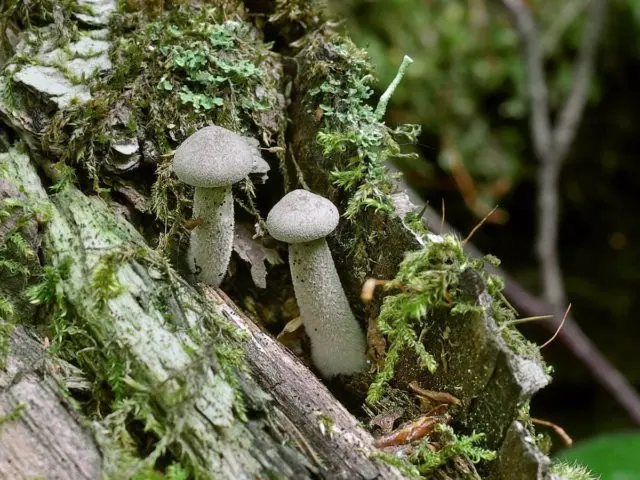
Mushrooms are small in size and have clear edges of the fruiting body.
Description of the May tinder fungus
Polyporus ciliary has a very spectacular structure and the ability to change in accordance with weather conditions and the place of growth. Very often, at first glance, it is mistaken for other varieties of mushrooms.
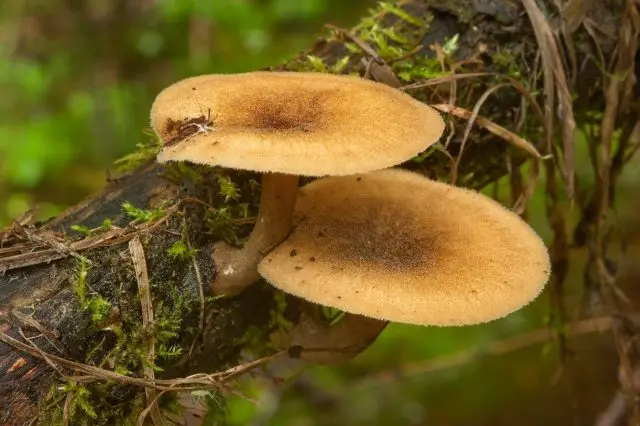
May tinder fungus on the trunk of a fallen tree
Cap Description
The May tinder fungus appears with a rounded bell-shaped hat. Its edges are noticeably tucked inward. As it grows, the hat straightens out, becoming at first even with the edges still wrapped in a roller, and then spread out with a small depression in the center. The fruit body grows from 3,5 to 13 cm.
The surface is dry, covered with thin cilia-flakes. The color is varied: grayish-silver or brownish-white in a young mushroom, then darkens to gray-spotted, creamy golden, brown-olive and reddish-brown.
The pulp is thin, cream or white, with a pronounced mushroom aroma, very tough, fibrous.
The geminophore is tubular, short, descending onto the stem in a smoothly curved arch. The color is white and white-cream.
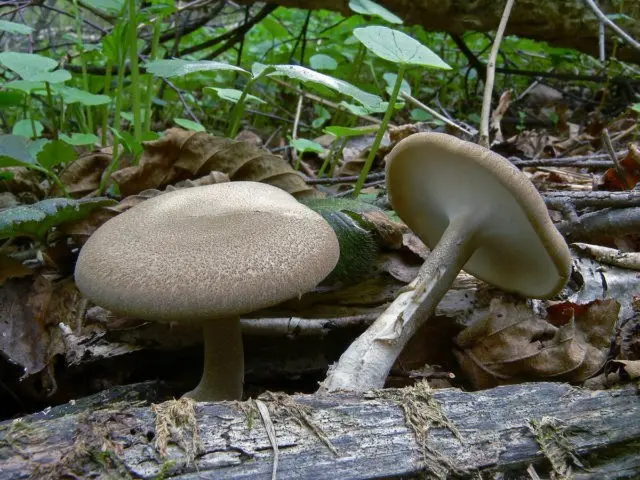
The hat may be dark-colored, but the spongy underside is always light
Description of the leg
The stem is cylindrical, with a tuberous thickening at the base, slightly expanding towards the cap. Often curved, relatively thin. Its color is similar to the hat: grayish-white, silvery, brown, olive-reddish, brownish-golden. The color is uneven, has dotted spots. The surface is dry, velvety, at the root it may be covered with black sparse scales. The pulp is dense, hard. Its diameter is from 0,6 to 1,5 cm, height reaches 9-12 cm.
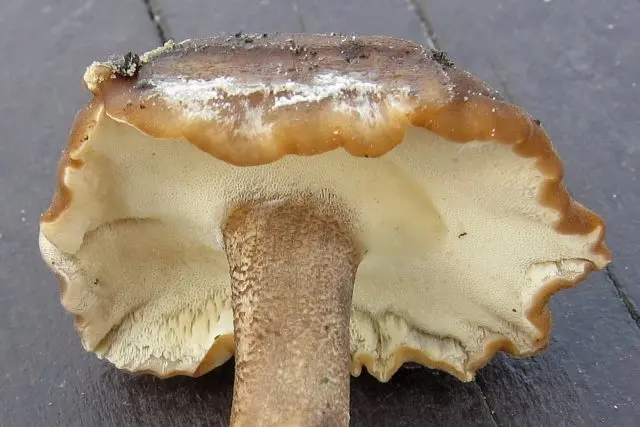
The leg is covered with thin scales of brown-brown color.
Where and how to grow
May tinder loves sunny meadows, often hiding in the grass. It grows on rotten and fallen trunks, fallen trees, stumps. Appears in mixed forests, parks and gardens, single specimens and small groups. It is found everywhere throughout the temperate zone: in Our Country, Europe, North America and on the islands.
The mushroom picker begins to bear fruit one of the first, as soon as warm weather sets in, usually in April. Mushrooms actively grow until the end of summer, you can see them in warm autumn.
Is the mushroom edible or not?
May tinder fungus is inedible. The pulp is thin, hard, has no nutritional and culinary value. No toxic or poisonous substances were found in its composition.
Twins and their differences
In the spring, it is difficult to confuse the May Trutovik with another mushroom, since the twins have not yet germinated.
In summer, it is very similar to the winter tinder fungus. Conditionally edible mushroom, growing until October-November. It is distinguished by a more porous structure of the geminophore and a rich color of the cap.
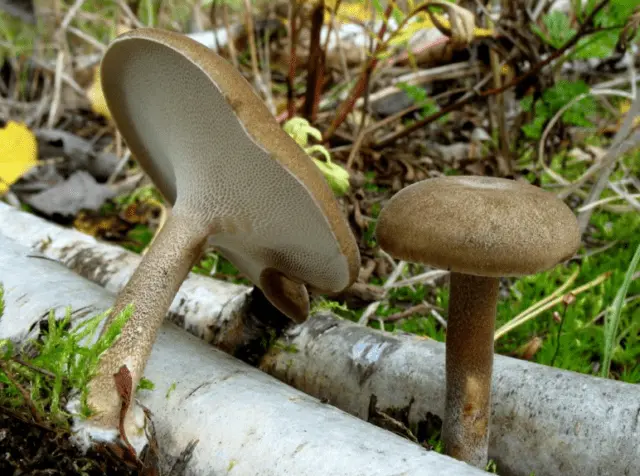
The winter tinder fungus loves to settle on rotten birch trees.
Conclusion
May tinder fungus is an inedible spongy fungus that settles on the remains of trees. It is widely distributed in the Northern Hemisphere, most often it can be found in May. Likes deciduous and mixed forests, meadows and gardens. It can grow on submerged trunks and snags. He has no toxic twins. The rotting tree trunk is often buried in the soil, so it may seem that the May fungus grows right on the ground.









